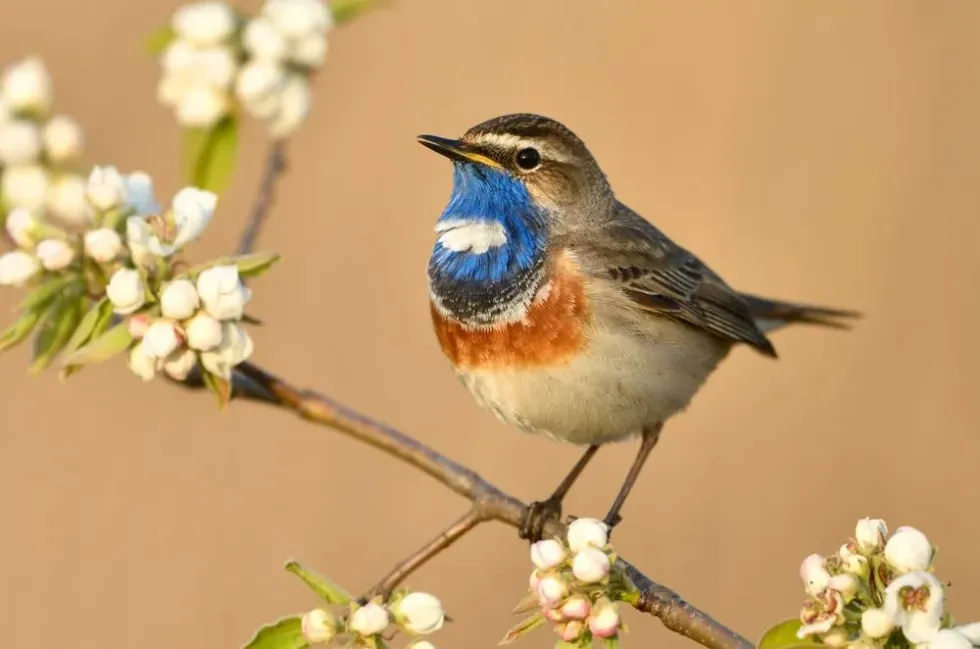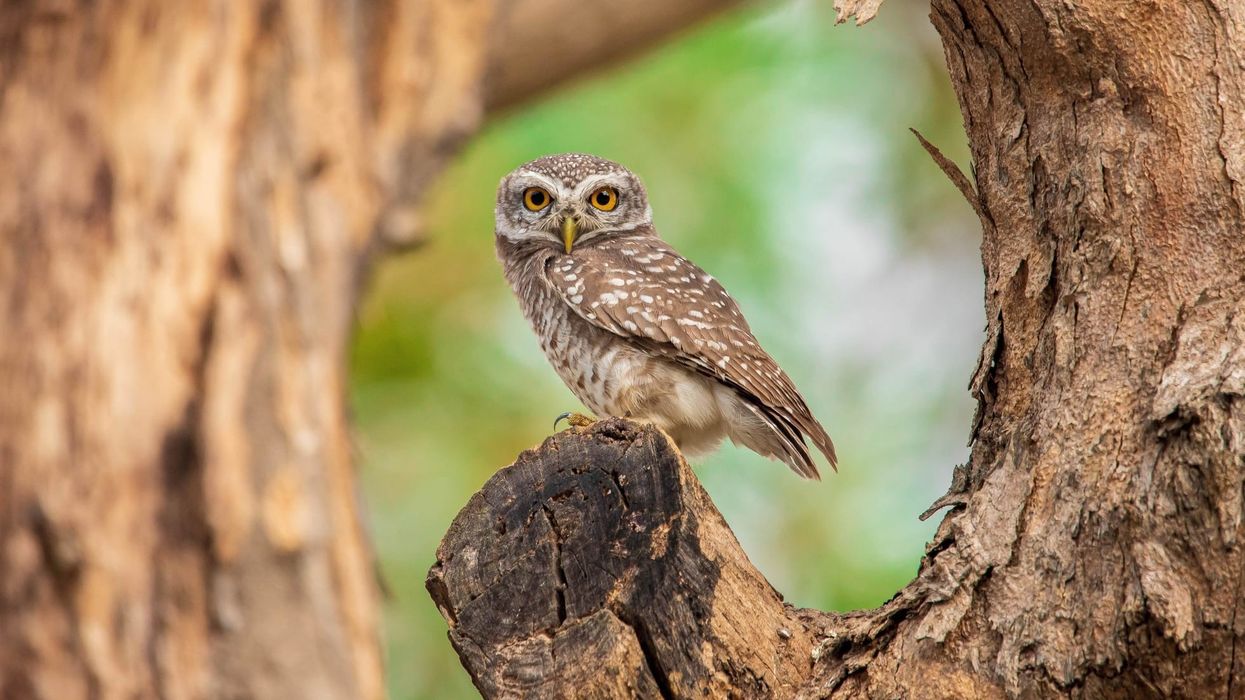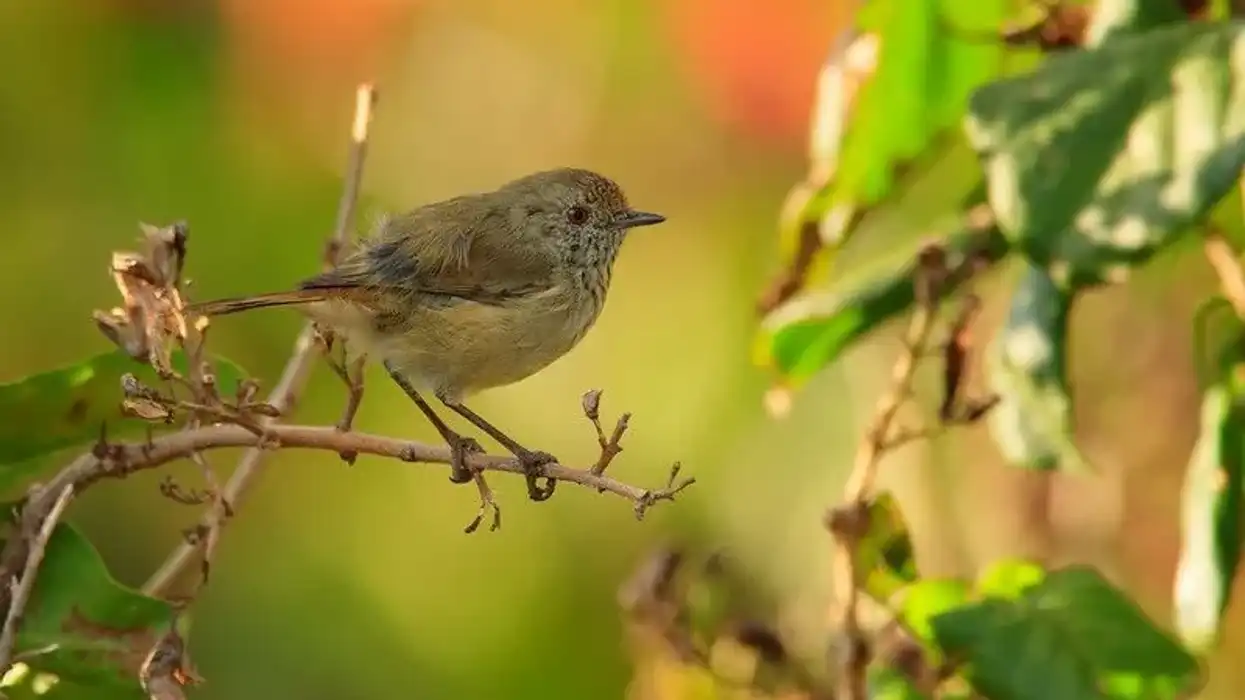Do you love songbirds like the house wren? Then, you'll love bluethroats.
Bluethroats (Luscinia svecica) are small-sized slim songbird members of the Old World flycatcher family who belong to the order Passeriformes. There are 12 subspecies of bluethroats which are usually different in plumage color and have different patterns on their throats.
Their central throat spots can be chestnut or white in color, depending on the subspecies of the white-spotted or red-spotted bird.
These birds are not fond of humans and can be quite unforthcoming. They will waggle back into their covers when approached.
Male bluethroats display more ornamental plumage than females, whose central throats do not have a blue patch. Bluethroats are amazing birds to look at because of their vibrant plumage!
If you liked these true facts about the bluethroat, then you'll surely like these facts about eagles and hawks too!
Bluethroat Interesting Facts
What type of animal is a bluethroat?
The bluethroat (Luscinia svecica) belongs to the Old World flycatcher family and the order Passeriformes. This bird forages on the ground of the densely covered forest, searching for insects from the lower parts of plants and from the soil for food.
Male bluethroat birds sing loudly to defend their territory while hiding on top of scrubs and tree branches. These species are mostly found on the ground, hopping from one place to another, searching for insects.
What class of animal does a bluethroat belong to?
The bluethroat (Luscinia svecica) belongs to the Aves class of animals. The Aves class consists solely of birds and this bird belongs to the Old World flycatcher family. Birds are known to be warm-blooded vertebrates that are characterized by their feathers, by laying hard-shelled eggs, their toothless beaked jaws, having a four-chambered heart, and a lightweight yet strong skeleton.
How many bluethroats are there in the world?
The total population of bluethroats around the world is more than 2 million individuals, with all of them spread across Asia, Africa, and North America.
Where does a bluethroat live?
Bluethroats are migratory species of birds. During the summer season, these birds spend their time in the open tundra region of Alaska.
These birds migrate from one part of the world to another during the breeding season and fly to Asia, Europe, and North America to search for a warmer climate. The bluethroat bird range includes short brushy habitats near water bodies or scrubs on hills.
What is a bluethroat's habitat?
The bluethroat (Luscinia svecica) builds its nest under dense short shrubs, at the side of a grass tussock with thick vegetation and on patches of open ground. Females are responsible for searching for the best proper location and building the nests.
Females build an open cup-shaped nest with the help of weeds, moss, twigs, rootlets, and hairs from furry animals.
Who does bluethroat live with?
The bluethroat bird is a social bird that lives in groups. These groups are formed to keep them safe from predators that might hunt them when they are alone!
How long does a bluethroat live?
The bluethroat's average lifespan is five years, with proper care and a healthy diet this species can live up to seven years in captivity.
How do they reproduce?
Both the bluethroat male and female reach sexual maturity after their first year of life. During the breeding season, these birds prefer a cold climate. The male will face the female and point its bill up, showing its colorful central throat patterns. It will then raise its tail while hopping and singing around the female as a mating ritual.
The litter size of these birds is between four and eight eggs, with an incubation period of 13-14 days which is done mostly by females. Both parents are responsible for providing food and shelter until the young bird learns to fly.
What is their conservation status?
These birds are listed as a species of Least Concern on the IUCN Red List due to their large population of more than two million individuals across their range.
Bluethroat Fun Facts
What do bluethroats look like?
Bluethroats are generally brown in color except for their black tails, red patches on their sides, and white underbodies. Males of this species are more colorful compared to females, who have a black crescent and cream-colored central throat with a brown-colored body.
Males of this species have a distinct blue bib just below their beak extending to the breast with sequential black and brown borders.
Their eyes are dark brown, and their bill is black in color. A few species, such as the red-spotted bluethroat, have a red spot in the center of their blue throat bib and the white-spotted bluethroat has white spots in the center of its blue bib.
How cute are they?
These birds are very cute. They can win over anyone with their beautiful and colorful plumage and they justify their name of 'bluethroat' as they appear to have a blue bib under their central throat.
How do they communicate?
This species uses sound vocalizations to communicate with each other. The male bluethroat produces a variety of song calls during the breeding season. The most common song call of the bluethroat is that 'chat chack' noise.
How big is a bluethroat?
The bluethroat is a small bird that can extend up to 5.1-5.5 in (13–14 cm) in wingspan. Since these birds are sexually dimorphic, males are larger than females. They are slightly smaller than palm warblers.
How fast can a bluethroat move?
Due to a lack of specific data, the speed at which these small birds fly cannot be stated. Their flight altitude is also unknown because of the aforementioned lack of data.
How much does a bluethroat weigh?
A bluethroat is a small bird found in the wild and weighs only 0.5 -0.6 oz (15-17 g).
What are the male and female names of the species?
At present, no particular name has been assigned to either males or females of the species.
What would you call a baby bluethroat?
Baby bluethroats are called chicks. Only females will incubate the eggs that chicks hatch from, but both males and females will feed each young chick. Chicks start growing feathers 14-15 days after hatching, and these juveniles have freckles and dark brown spots on the top of their body.
What do they eat?
Bluethroats are omnivorous in nature but their diet depends more on insects, which makes them an insectivore. This blue-throat bird can catch insects while it is in flight, and it feeds on beetles, ants, crane flies, spiders, earthworms, caterpillars, sawfly larvae, snails, berries, and seeds.
Are they poisonous?
No, they are not poisonous at all. These birds are usually docile and will not attack unprovoked.
Would they make a good pet?
Bluethroats make excellent pets as they are beautiful, attractive, and active birds. This bird species is social in nature and can live with other species peacefully, and their feeding habits make them relatively easy to take care of.
Did you know...
White-spotted bluethroats are native to central and southern Europe. These subspecies have a white spot in the center of the blue bib below their throat, whereas red-spotted bluethroats, who are also native to Europe, have a red spot in the center of the blue bib below their throat.
Bluethroats were earlier classified as a member of the thrush family, but they are now considered to be an Old World flycatcher species of birds.
Are they endangered?
No, as of now, these species are not endangered. They are listed as a Least Concern species on the IUCN Red List.
What is their migration route?
The reason for the migration of bluethroat birds is that they need a cold climate during the breeding season. However, during winter, this bird migrates to Asia and the Indian sub-continent in search of a warmer habitat range. On its passage to Asia and Indian sub-continents, this bird crosses the United Kingdom, covering Scotland, Kent, and Cornwall.
Here at Kidadl, we have carefully created lots of interesting family-friendly animal facts for everyone to discover! Learn more about some other birds from our toucan facts and birds of paradise facts pages.
You can even occupy yourself at home by coloring in one of our free printable bluethroat coloring pages.









